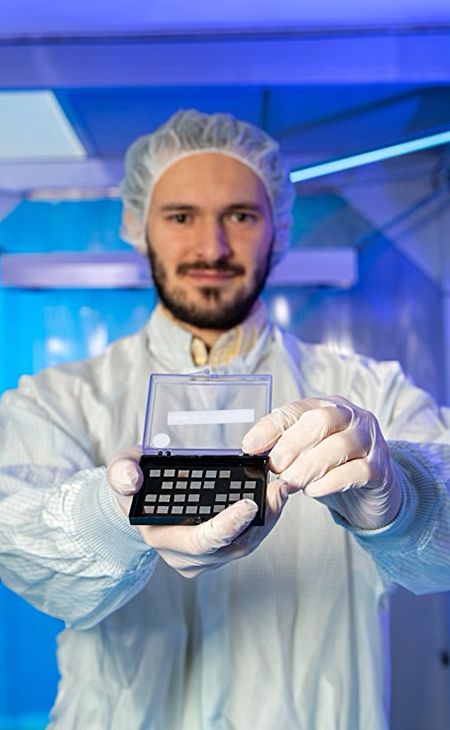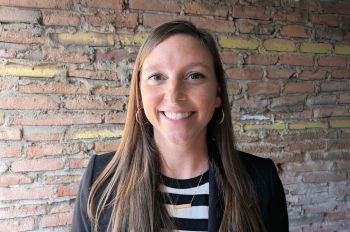Helping to Take Quantum Computing to the Next Level
The Superconducting Quantum Materials and Systems Center (SQMS), which is led by Fermi National Laboratory, is looking to bring the quantum computers of the future into the present.
One of the members of the SQMS team working to create these breakthroughs is Francesco Crisa (Ph.D. PHYS ’24), whose team published a paper in April 2024 in Nature Partner Journal Quantum Information titled “Systematic Improvements in Transmon Qubit Coherence Enabled by Niobium Surface Encapsulation,” that unveiled its research on improving the performance of qubits, or crucial hardware in quantum computing.
“NPJ is a great journal; it’s an honor for me to be published,” Crisa says, adding, “We got pretty good results, and we implemented the metal that can be used farther.
“It has almost endless possibilities.”
While qubits—quantum bits—are the quantum computing equivalent to a bit in classical computing, it’s not exactly a one-to-one comparison.
“A quantum computer represents information in a completely different way compared to a classical computer,” says Crisa. “Differently from a classical computer that has just 0 and 1, a quantum computer has 0 and 1, plus a superposition of these states. A qubit—the basic unit—can have an infinite number of states.”
This ability for qubits to have an infinite number of states means that these building blocks of quantum computers can process information faster than classical computers. A significant limitation on how effective a qubit can be is the amount of time it can store quantum information. The longer the qubit’s lifespan, the better.
That’s where Crisa and his team have made a significant advancement.
Through a process called surface encapsulation, a protective layer is formed atop the qubit. Typically, metals such as niobium or aluminum have been used to create superconducting qubits. Crisa’s team has discovered that implementing a capping layer of tantalum—containing the niobium oxide layer underneath—increases the coherence time more than three times longer.
“It pushed the performance higher, making better qubits,” says Crisa, adding, “The longer the time the processor lives, the more operations you can perform. If you can do more operation, you can do longer, more important, and more sophisticated simulations. It’s still not enough to create and be the final quantum computer, but it’s a pretty big push toward a proper implementation of a quantum computer.”
Illinois Governor J. B. Pritzker is aiming to make Illinois the Silicon Valley of quantum development, so Crisa and the SQMS team are poised to be key leaders in the race to advance quantum computing.
“We’re also planning to start coupling qubits,” Crisa says. “Right now, we’re pushing the coherence of a single qubit, but to create a processor you need many of them. You have to start studying, developing, and researching the best ways to couple one qubit to another and what the architecture of a processor would be.”
Being able to contribute to advancements that will improve quantum computing even further is what excites Crisa the most—and these contributions to a wide range of research are likely to have far-reaching consequences.
“We have an inner core at SQMS that is situated at Fermilab, but then we have cooperation with universities, with industry,” says Crisa. “We are a bridge between the peer research and the will to actually build a working quantum computer that could be used in many, many ways—physical research, economics research, pharmaceutical research—all important topics for the development of human beings.”



